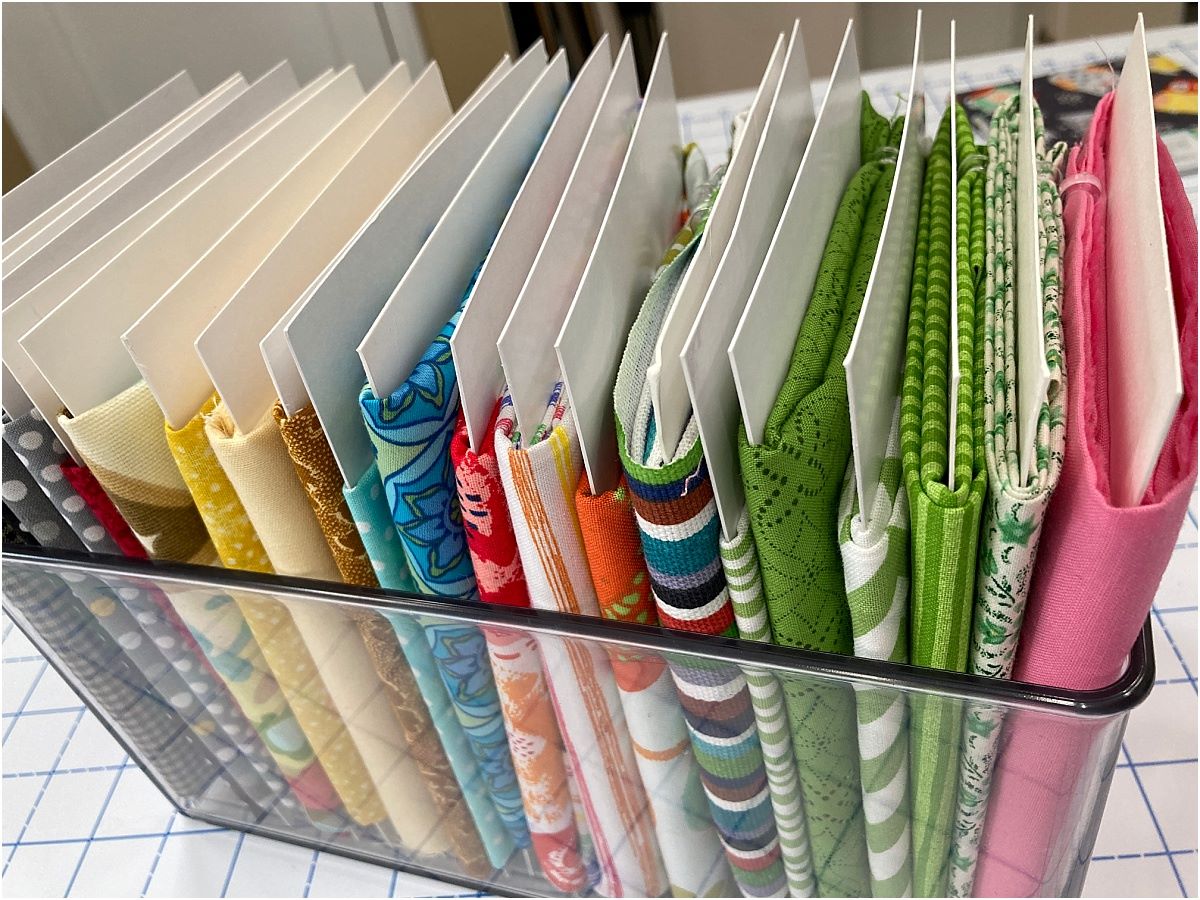

Articles
How To Store Fabric
Modified: March 23, 2024
Learn how to store fabric articles properly to prevent damage and keep them organized. Follow these easy steps and tips for fabric storage.
(Many of the links in this article redirect to a specific reviewed product. Your purchase of these products through affiliate links helps to generate commission for Storables.com, at no extra cost. Learn more)
Introduction
Welcome to the world of fabric storage! Whether you’re a sewing enthusiast, a quilter, or someone who just loves collecting various types of fabric, you know how important it is to keep your fabric collection organized and well-maintained. Proper fabric storage not only helps you easily find the fabric you need for your next project but also helps to preserve its quality and prolong its lifespan.
In this article, we will explore the different aspects of fabric storage and provide you with valuable tips and techniques to keep your fabric stash in perfect condition. From choosing the right storage containers to organizing your collection, we’ll cover it all!
Before we dive into the specifics, let’s talk about why fabric storage is important. Fabrics, especially natural fibers like cotton and silk, can be susceptible to damage caused by factors such as sunlight, moisture, and pests. Improper storage can lead to discoloration, mold growth, insect infestations, and even fabric degradation. By implementing effective fabric storage practices, you can minimize these risks and ensure that your fabrics remain in top-notch condition.
Now that we understand the importance of fabric storage, let’s explore the basics.
Key Takeaways:
- Proper fabric storage is crucial for preserving fabric quality and longevity. Factors like sunlight, humidity, and pests impact storage, so controlling these elements is key to protecting your fabrics.
- Organizing your fabric collection by type, color, and size enhances accessibility and efficiency. Following fabric care guidelines, gentle cleaning methods, and regular maintenance help maintain fabric quality for long-term use.
Read more: How To Store Quilting Fabric
Understanding Fabric Storage
When it comes to fabric storage, the key is to create an environment that protects fabrics from potential sources of damage. This includes minimizing exposure to sunlight, controlling humidity levels, and preventing pests from infiltrating the storage area.
Sunlight can cause fabrics to fade and weaken over time. Therefore, it is crucial to store fabrics in a dark or low-light area. If your storage space has windows, consider covering them with curtains or blinds to block out direct sunlight. Additionally, fluorescent and incandescent lights can also fade fabrics, so it’s best to avoid storing fabrics near light sources.
Humidity control is another essential factor in fabric storage. High humidity can lead to mold growth and can even cause fabrics to develop a musty odor. On the other hand, low humidity can cause fabrics to become brittle and prone to tearing.
It is ideal to store fabrics in a cool, dry area with a consistent humidity level of around 45-55%. If your storage space is prone to high humidity, consider using dehumidifiers or moisture-absorbing products like silica gel packets to maintain optimal conditions.
Pests, such as moths and beetles, can cause significant damage to fabrics, especially natural fibers. These creatures are attracted to the protein found in natural fibers like wool and silk. To prevent infestations, ensure that your fabric storage area is clean and free from food debris. Consider using natural deterrents like cedar blocks or lavender sachets to repel pests.
Now that we have a good understanding of the factors to consider in fabric storage, let’s move on to the basics of how to store fabric effectively.
Basics of Fabric Storage
When it comes to storing fabric, it’s important to keep a few key principles in mind: organization, protection, and accessibility. By following these basics, you can ensure that your fabric stays in great condition and is easily accessible for your future projects.
1. Fold and Stack: One of the most common methods of fabric storage is folding and stacking. Start by neatly folding your fabric pieces, making sure to align the edges. Then, stack them vertically on a shelf or in a storage bin. This allows you to easily see and access each fabric piece without having to dig through a pile. For added protection, you can place acid-free tissue paper between the layers to prevent color transfer and creasing.
2. Categorize by Type: To make it even easier to find the fabric you need, consider categorizing your fabrics by type. For example, you can create separate sections for cotton, silk, linen, or specific types like floral prints or striped fabrics. This helps streamline your search process and keeps your collection organized.
3. Labeling: To enhance organization and accessibility, labeling your storage containers or shelves is a great idea. Use clear, readable labels on the outside of the containers or on the edge of shelves to indicate the content inside. This makes it simple to identify and retrieve the fabric you need without any hassle.
4. Temperature and Humidity Control: As mentioned earlier, maintaining a stable temperature and humidity level is crucial for fabric storage. Avoid storing fabrics in areas that experience extreme temperature fluctuations or high humidity, such as attics or basements. Instead, opt for cool, dry areas in your home where the conditions remain relatively stable.
5. Protection from Dust and Light: To protect your fabric from dust and light exposure, consider using storage containers with lids or fabric storage bags. These help create a barrier against dust and minimize the impact of light on the fabric. Keep in mind that it’s best to choose containers made from acid-free materials to prevent any chemical reactions that may affect the fabric over time.
By following these basic fabric storage principles, you can ensure that your fabric collection remains well-organized, protected, and easily accessible for all your future creative projects.
Choosing the Right Storage Container
When it comes to storing fabric, choosing the right storage container is essential. The container you select should not only provide protection but also allow for easy organization and accessibility. Here are some factors to consider when choosing the perfect storage container for your fabric:
1. Size and Capacity: Consider the size and capacity of the storage container based on the amount of fabric you have. If you have a large fabric collection, opt for larger containers or multiple smaller ones that can accommodate your fabrics comfortably.
2. Material: Look for storage containers made from durable and sturdy materials that provide adequate protection against dust, light, and pests. Plastic bins and boxes are a popular choice as they are lightweight, affordable, and offer excellent protection. Make sure the containers are made from BPA-free and acid-free materials to prevent any chemical reactions that may harm the fabric.
3. Transparency: Opt for storage containers that are transparent or have clear windows, as this allows you to easily see the contents without having to open each container. This makes it convenient to find and retrieve the fabric you need without unnecessary searching or handling.
4. Stackability: Consider the stackability of the storage containers to maximize the use of vertical space. Look for containers with secure lids that allow for stable stacking without risking damage to the fabrics inside. This is particularly useful if you have limited storage space.
5. Accessibility: Choose storage containers that have easy-to-open and close lids. This ensures that you can access your fabrics effortlessly without struggling with cumbersome lids or fasteners. Additionally, consider containers with handles for convenient transportation.
6. Climate Control: If you live in an area with extreme temperature fluctuations or high humidity levels, consider investing in storage containers with built-in climate control features. These containers offer insulation and can regulate temperature and humidity, providing extra protection for your fabrics.
Remember, when selecting storage containers, it’s important to consider your specific needs and the conditions of your storage space. By choosing the right storage container, you can ensure that your fabrics are well-protected and easily accessible whenever inspiration strikes.
Storing Fabric in Plastic Bins
Plastic bins are a popular and practical choice for storing fabric. They offer protection against dust, pests, and light while providing an organized and easily accessible storage solution. Here are some tips for effectively storing fabric in plastic bins:
1. Clean and Prepare the Bins: Before placing fabric in the bins, clean them thoroughly to remove any dust or dirt. Wipe down the interior with a clean, damp cloth and allow it to dry completely. This ensures that your fabric remains clean and free from any contaminants.
2. Line the Bins: To provide an extra layer of protection for your fabric, consider lining the bins with acid-free tissue paper or cotton fabric. This helps prevent any potential color transfer and keeps the fabric in pristine condition.
3. Sort and Fold: Sort your fabric collection into categories, such as by type or color, before placing them in the bins. Neatly fold each piece of fabric, aligning the edges, and stack them vertically in the bins. This method allows for easy visibility and access to the fabrics without disrupting the organization.
4. Utilize Dividers or Compartments: If you have smaller fabric pieces or want to further categorize your fabrics, consider using dividers or compartments within the bins. This helps keep different fabrics separate and allows for better organization and accessibility.
5. Label the Bins: To make it even easier to find specific fabrics, label each bin accordingly. Use clear and legible labels or tags on the outside of the bins, specifying the fabric type or category stored inside. This saves time and effort when searching for a specific fabric.
6. Stack the Bins: To maximize your storage space, stack the plastic bins securely. Ensure that the bins are stable and balanced to prevent any accidents or damage. If you have a large fabric collection, consider using shelves or sturdy racks to support the stacked bins and provide easy access to each bin.
7. Check and Maintain: Regularly check on your fabric stored in plastic bins to ensure that it remains in good condition. If you notice any signs of moisture, pests, or damage, take immediate action to address the issue and prevent further damage.
Storing fabric in plastic bins not only keeps your fabrics protected but also allows for efficient organization and accessibility. Follow these tips to create a fabric storage system that keeps your collection in excellent condition and ready for your next project!
Read more: How To Store Fabric Rolls
Storing Fabric on Shelves
Storing fabric on shelves is a popular method that allows for easy visibility, accessibility, and efficient organization of your fabric collection. Here are some tips for effectively storing fabric on shelves:
1. Choose Sturdy Shelves: Before storing your fabric on shelves, ensure that the shelves are sturdy and can support the weight of the fabric. Adjustable shelves are ideal as they allow you to customize the spacing to suit the size of your fabric pieces.
2. Categorize and Sort: Before placing fabric on the shelves, categorize and sort your collection. Arrange fabrics by type, color, or pattern to create a visually appealing and organized display. This also makes it easier to find specific fabrics when you need them.
3. Fold and Stack: Neatly fold each fabric piece, aligning the edges, and stack them horizontally on the shelves. To maintain the integrity of the fabric, avoid stacking too many heavy fabrics on top of each other. Use dividers or shelf organizers to separate different categories or types of fabric.
4. Utilize Clear Containers or Baskets: If you prefer a more contained look or want to protect your fabric from dust, consider using clear plastic containers or fabric baskets. These containers can help keep fabrics organized and protected while still allowing easy visibility.
5. Label the Shelves: To enhance organization and quick identification, label each shelf with the fabric type or category it contains. Use clear and legible labels or tags that can be easily seen and read. This saves time and effort when searching for a specific fabric piece.
6. Consider Display Options: If you have fabric pieces that are visually stunning or hold sentimental value, consider displaying them on open shelves. This adds an artistic touch to your space and allows you to appreciate and admire your favorite fabrics.
7. Regular Maintenance: Regularly dust and clean the shelves to prevent the accumulation of dust and debris. Inspect the fabrics periodically for any signs of damage or pests and take necessary action if needed. This ensures that your fabric collection remains in excellent condition.
Storing fabric on shelves not only keeps your collection organized and accessible but also adds a decorative element to your space. By following these tips, you can create a functional and visually appealing fabric storage system that showcases your fabrics while keeping them in pristine condition.
Store fabric in a cool, dry place away from direct sunlight to prevent fading and damage. Avoid storing in plastic bags, as they can trap moisture. Instead, use breathable fabric storage bags or acid-free boxes.
Hanging Fabric Storage
Hanging fabric storage is an excellent option for those who want to make the most of vertical space and easily access their fabric collection. Here are some tips for effectively storing fabric by hanging:
1. Use Fabric Hangers or Clips: Invest in fabric hangers or clips specifically designed for hanging fabrics. These hangers are typically flat and smooth, preventing any snagging or damage to your fabrics. Alternatively, you can use regular hangers with clips to secure the fabric in place.
2. Categorize by Length or Type: Depending on your preference, categorize your fabrics by length or type before hanging them. Hanging fabrics by length allows for easy visual identification and selection, while hanging fabrics by type promotes an organized and visually pleasing display.
3. Fold and Hang: Fold your fabrics neatly, aligning the edges, and hang them over the hangers or clips. For larger or bulkier fabrics, you may need to fold them in half or thirds to fit onto the hanger. Hanging folded fabrics helps prevent creases and allows for better organization.
4. Separate with Dividers: If you have a large fabric collection, consider using dividers to separate different categories or types of fabric. This helps keep fabrics organized and prevents them from mixing or tangling with one another.
5. Label the Hangers or Clips: To quickly identify the fabric you need, consider attaching labels to the hangers or clips. You can use tags or adhesive labels with information on the fabric type, color, or any other relevant details. This saves time and effort when searching for a specific fabric.
6. Store in Dedicated Hangars or Racks: Create a dedicated space for your hanging fabric storage by using garment racks or specialized fabric storage racks. These racks provide structure and stability while allowing you to easily view and access your fabric collection.
7. Consider Storage Covers: If you want to protect your hanging fabrics from dust or light exposure, consider using fabric storage covers or garment bags. These covers add an extra layer of protection while still allowing easy access to your fabrics.
8. Regular Maintenance: Regularly inspect your hanging fabrics for any signs of damage or pests. Dust the fabrics and the hangers or clips to prevent the accumulation of dust or debris. Take necessary measures to address any issues promptly.
Hanging fabric storage is a space-saving and visually appealing option that allows for easy access and organization. By following these tips, you can create a functional and efficient fabric storage system while showcasing the beauty of your fabrics.
Using Ziplock Bags for Fabric Storage
Ziplock bags are a versatile and convenient option for storing fabric, especially smaller pieces or remnants. They provide protection against dust, moisture, and pests while allowing for easy visibility and organization. Here’s how to effectively use Ziplock bags for fabric storage:
1. Sort and Organize: Begin by sorting and organizing your fabric collection based on type, color, or size. This helps you easily locate and retrieve specific fabrics when needed. Grouping similar fabrics together also makes it easier to organize and store them in Ziplock bags.
2. Select the Right Size: Choose Ziplock bags that are appropriate for the size of your fabric pieces. Consider the dimensions of the bags and the size of the fabric when folded or rolled. Smaller bags are suitable for small scraps or fabric samples, while larger bags can accommodate larger fabric pieces.
3. Clean and Dry: Ensure that your fabric pieces are clean and dry before placing them in Ziplock bags. Any moisture or dirt trapped inside can lead to mold or discoloration over time. If necessary, wash and thoroughly dry the fabric before storing it.
4. Fold and Roll: Neatly fold or roll your fabric pieces before placing them in the Ziplock bags. This helps to minimize wrinkling or creasing and allows for better organization within the bags. Ensure that each fabric piece is neatly folded or rolled to optimize space within the bags.
5. Label the Bags: To easily identify the contents of each Ziplock bag, label them with the fabric type, color, or any other relevant information. You can use sticky labels, adhesive tags, or simply write directly on the bags with a permanent marker. Clear and legible labeling saves time when searching for specific fabrics later on.
6. Remove Excess Air: Before sealing the Ziplock bags, make sure to remove as much air as possible. This helps to reduce excess bulk and ensures a tight seal. You can use your hands to gently press out the air or employ a vacuum-sealing technique for added efficiency.
7. Store in a Suitable Container: Once you have filled your Ziplock bags with fabrics, consider storing them in a suitable container for added protection and organization. Plastic bins or fabric storage boxes are an excellent choice, as they provide an extra layer of protection against dust, sunlight, and pests.
8. Regular Checkups: Occasionally check the Ziplock bags for any signs of damage, moisture, or pests. This allows you to address any issues promptly and prevent further damage to your fabric collection.
Ziplock bags offer a practical and space-saving solution for storing fabrics, especially smaller pieces. By following these tips, you can keep your fabrics organized, protected, and easily accessible for all your future sewing projects.
Special Considerations for Delicate Fabrics
Delicate fabrics require extra care and attention when it comes to storage. Fabrics such as silk, lace, chiffon, and velvet are more prone to damage, and improper storage can lead to wrinkling, snagging, or discoloration. Here are some special considerations to keep in mind when storing delicate fabrics:
1. Clean Before Storage: Before storing delicate fabrics, it is important to ensure they are clean. Dirt, stains, or oils left on the fabric can become more difficult to remove over time and may cause further damage. Refer to the fabric care instructions for the appropriate cleaning method.
2. Avoid Hangers: Hanging delicate fabrics for a prolonged period can result in stretching or distortion. Instead of hanging them, opt for folding and placing them in acid-free tissue paper or fabric bags to protect them from dust and light.
3. Use Acid-Free Tissue Paper: Delicate fabrics can be susceptible to discoloration or damage from contact with acidic materials. To prevent this, place acid-free tissue paper between folds or layers of delicate fabrics to create a protective barrier.
4. Control Temperature and Humidity: Delicate fabrics are sensitive to changes in temperature and humidity. It is best to store them in a cool, dry environment with stable conditions. Extreme heat, high humidity, or fluctuating conditions can weaken the fibers and result in damage.
5. Keep Away from Direct Light: Exposure to sunlight or artificial light for a prolonged period can cause fading or discoloration of delicate fabrics. Store them in a dark or low-light area to minimize the risk of color loss.
6. Avoid Contact with Hard Surfaces: Delicate fabrics can easily snag or catch on rough surfaces. When storing them, avoid contact with rough or abrasive materials. Line storage containers or shelves with soft fabric or use storage containers with smooth surfaces to minimize the risk of damage.
7. Store Separately: It is advisable to store delicate fabrics separately from other fabrics. Fabrics with different textures or embellishments can cause friction or damage when stored together. Keep them in their own designated storage area or container to maintain their integrity.
8. Regular Checks: Periodically check on stored delicate fabrics to ensure they remain in good condition. Look for any signs of pests, moisture, or damage. If you notice any issues, take immediate action to address them and prevent further damage.
By following these special considerations for delicate fabrics, you can ensure that they stay in optimal condition and are ready to be used for your special projects. Proper storage and care will help preserve the beauty and lifespan of these fabrics for years to come.
Read more: How To Store Fabric Scraps
Organizing Your Fabric Collection
An organized fabric collection not only makes it easier to find and select fabrics for your projects but also helps to maintain the condition and longevity of your fabrics. Here are some tips for effectively organizing your fabric collection:
1. Sort by Type or Category: Begin by sorting your fabrics into categories based on type, such as cotton, silk, or linen, or by specific categories like floral prints, solids, or stripes. This allows for better visualization and easy identification of fabrics.
2. Consider Color Coordination: Once you have sorted your fabrics into categories, consider further organizing them by color. This adds an extra level of organization and helps to easily identify and match fabrics for specific projects.
3. Use Clear Bins or Containers: Transparent or clear storage bins or containers provide visibility and make it easier to see the contents without having to open each container. Label the containers with the fabric type or category for quick identification.
4. Divide by Size or Length: If you have fabrics of varying sizes or lengths, consider dividing them accordingly. Use dividers or separate containers to keep smaller pieces or remnants separate from larger fabric cuts.
5. Utilize Shelving or Cubbies: Shelving or cubbies are excellent for storing and displaying your fabric collection. Label each shelf or cubby to denote the fabric type or category it contains. This allows for efficient organization and easy access.
6. Hang Fabrics: Hanging fabrics, particularly those of larger lengths, can help save space and minimize wrinkles or creases. Use proper fabric hangers or clips to hang the fabrics and consider categorizing them by type or color for easy selection.
7. Store Smaller Pieces: Smaller fabric pieces or remnants can be stored in ziplock bags or clear pouches. Label each bag or pouch with the fabric type or color to effortlessly find specific pieces when needed.
8. Create a Fabric Catalog: Consider creating a fabric catalog or inventory system to keep track of your fabrics. This can be in the form of a physical binder or a digital spreadsheet, listing details such as fabric type, color, length, and location within your storage system. This catalog helps you quickly locate fabrics and avoid purchasing duplicates.
9. Regularly Reassess and Purge: Periodically review your fabric collection and reassess the fabrics you have. Donate or sell fabrics that you no longer need or love to keep your collection current and organized.
By organizing your fabric collection, you’ll save time and frustration when searching for specific fabrics. It also helps to preserve the quality and condition of your fabrics, ensuring they remain in excellent shape for your future sewing projects.
Tips for Maintaining Fabric Quality
To ensure the longevity and quality of your fabric collection, it’s important to follow proper fabric care and maintenance practices. Here are some valuable tips to help you maintain the quality of your fabrics:
1. Read Fabric Care Instructions: Before caring for any fabric, always check the care label or instructions that come with it. Different fabrics have unique care requirements, including washing guidelines, recommended water temperatures, and ironing instructions. Adhering to these instructions will help prevent damage and preserve the fabric’s quality.
2. Test for Colorfastness: Some fabrics may bleed or fade when washed or exposed to moisture. To prevent color bleeding, especially with vibrant or dark-colored fabrics, perform a colorfastness test before laundering. Dampen a white cloth or cotton swab with water and gently rub it on a small, inconspicuous area of the fabric. If there’s no color transfer, the fabric is likely colorfast.
3. Use Gentle Detergents: When washing your fabrics, opt for mild, gentle detergents specifically formulated for delicate or fine fabrics. Harsh detergents can strip away color, weaken fibers, and accelerate wear and tear. Avoid bleach unless indicated on the fabric care instructions.
4. Wash Similar Fabrics Together: Sort your fabrics by type or color and wash similar fabrics together to prevent color bleeding and damage. Washing light-colored fabrics separately from dark-colored fabrics is especially important to preserve their original color and appearance.
5. Use Cold Water: Unless specified on the care label, wash fabrics in cold water. Hot water can cause shrinkage, fading, and damage to certain types of fabrics. Cold water is gentle on fibers and helps maintain their integrity.
6. Minimize Tumbling: When drying fabrics, minimize the use of a dryer or choose a gentle setting. Tumbling fabrics excessively can lead to shrinkage, wrinkling, or distortion. Instead, air-drying fabrics is often the safest and most effective method to maintain their quality.
7. Iron with Care: Iron fabrics using the appropriate heat setting based on the fabric type. Always test a small, inconspicuous area before ironing to ensure that the fabric can withstand the heat. Use a pressing cloth to protect delicate fabrics from direct contact with the iron and to prevent shine or damage.
8. Store Properly: Follow the storage guidelines mentioned earlier in this article to maintain the quality of your fabrics. Store them in a cool, dry place away from direct sunlight, moisture, and pests. Proper storage helps prevent wrinkling, discoloration, and potential damage.
9. Handle with Clean Hands: When handling fabrics, make sure your hands are clean to avoid transferring dirt, oils, or lotions onto the fabric. This helps maintain the cleanliness and appearance of the fabric.
10. Regularly Inspect and Mend: Periodically inspect your fabric collection for any signs of wear, tears, or damage. Address any repairs or mending promptly to prevent further damage and maintain the quality of the fabric.
By implementing these tips for maintaining fabric quality, you’ll ensure that your fabrics retain their beauty, durability, and functionality for years to come. Regular care and attention will help you enjoy your fabric collection and maximize its potential for all your creative sewing endeavors.
Conclusion
Proper fabric storage is essential for preserving the quality and longevity of your fabric collection. By implementing effective storage techniques and following fabric care guidelines, you can ensure that your fabrics remain in pristine condition and are easily accessible for all your sewing projects.
Understanding the factors that can impact fabric storage, such as sunlight, humidity, and pests, is crucial in creating an optimal storage environment. By controlling these elements, you can minimize the risks of damage and ensure that your fabrics are protected.
Whether you choose to store your fabric in plastic bins, on shelves, hanging, or in ziplock bags, each method has its benefits. It’s important to consider your specific needs and space limitations when deciding on the best storage option for your fabric collection.
Taking special considerations for delicate fabrics and organizing your collection by type, color, or size can greatly enhance the accessibility and efficiency of your storage system. Clear labeling and regular maintenance help streamline the process of finding and utilizing your fabrics.
Finally, maintaining the quality of your fabrics involves following fabric care instructions, embracing gentle cleaning methods, and proper handling. Regular inspections and immediate repairs ensure that any small issues are addressed in a timely manner, preventing further damage.
By following these tips and techniques, you can create a well-organized fabric storage system that not only showcases the beauty of your fabric collection but also ensures that each piece remains in excellent condition. A little effort in fabric storage and maintenance goes a long way in preserving the quality and integrity of your fabrics, allowing you to fully enjoy and utilize them for all your creative endeavors.
Frequently Asked Questions about How To Store Fabric
Was this page helpful?
At Storables.com, we guarantee accurate and reliable information. Our content, validated by Expert Board Contributors, is crafted following stringent Editorial Policies. We're committed to providing you with well-researched, expert-backed insights for all your informational needs.
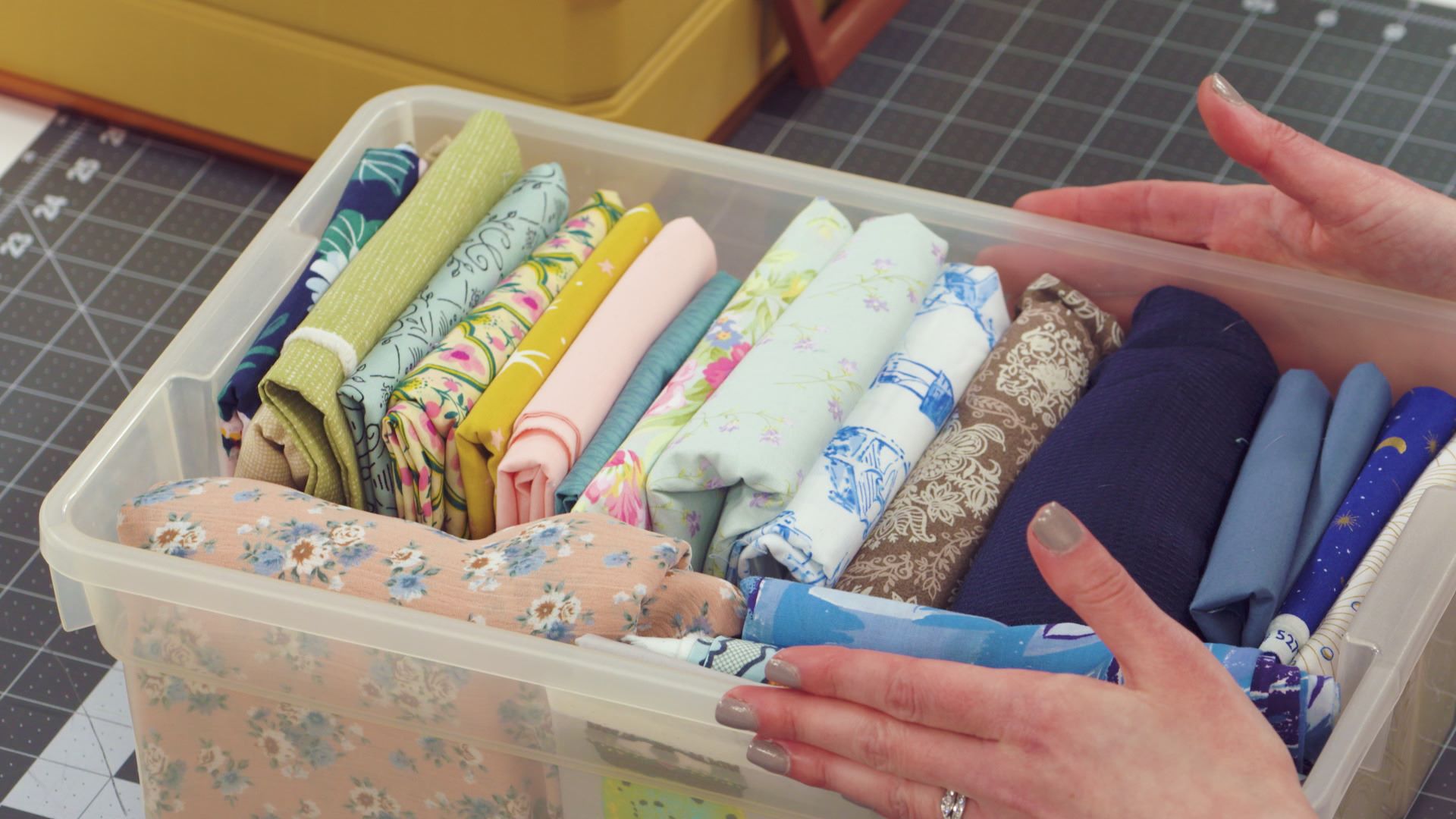
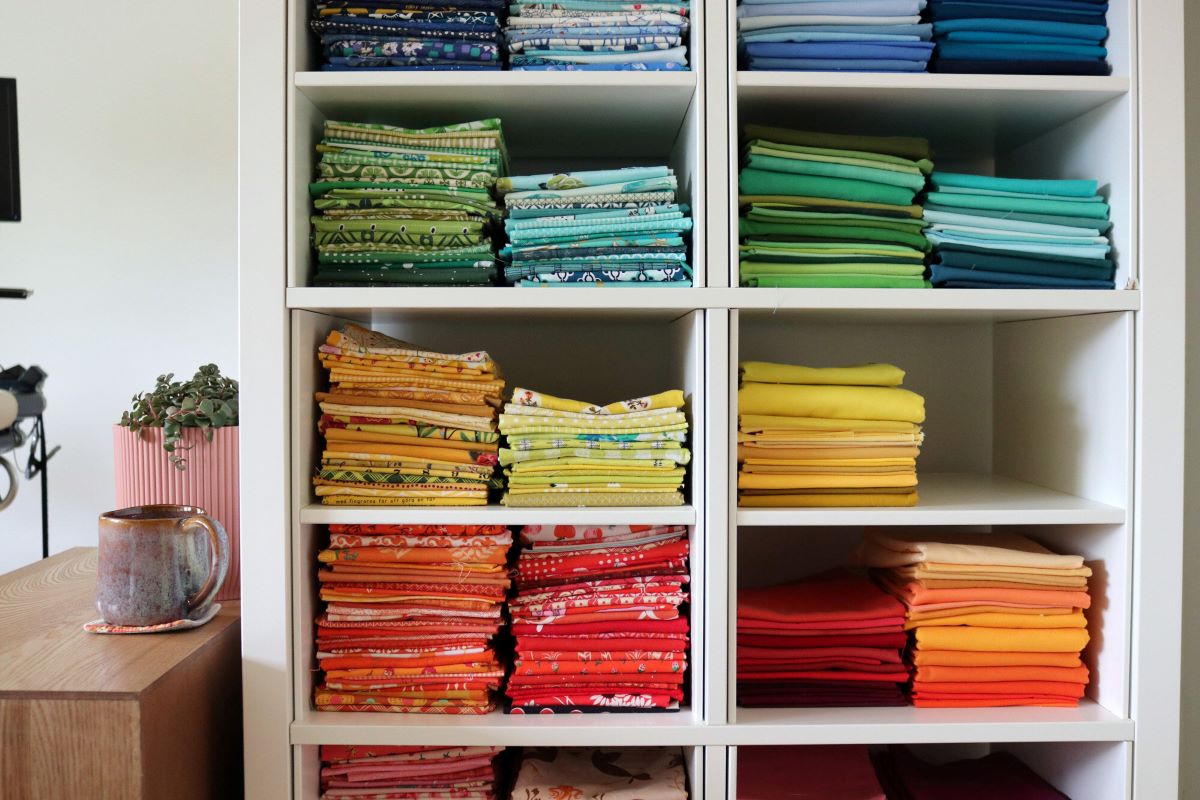
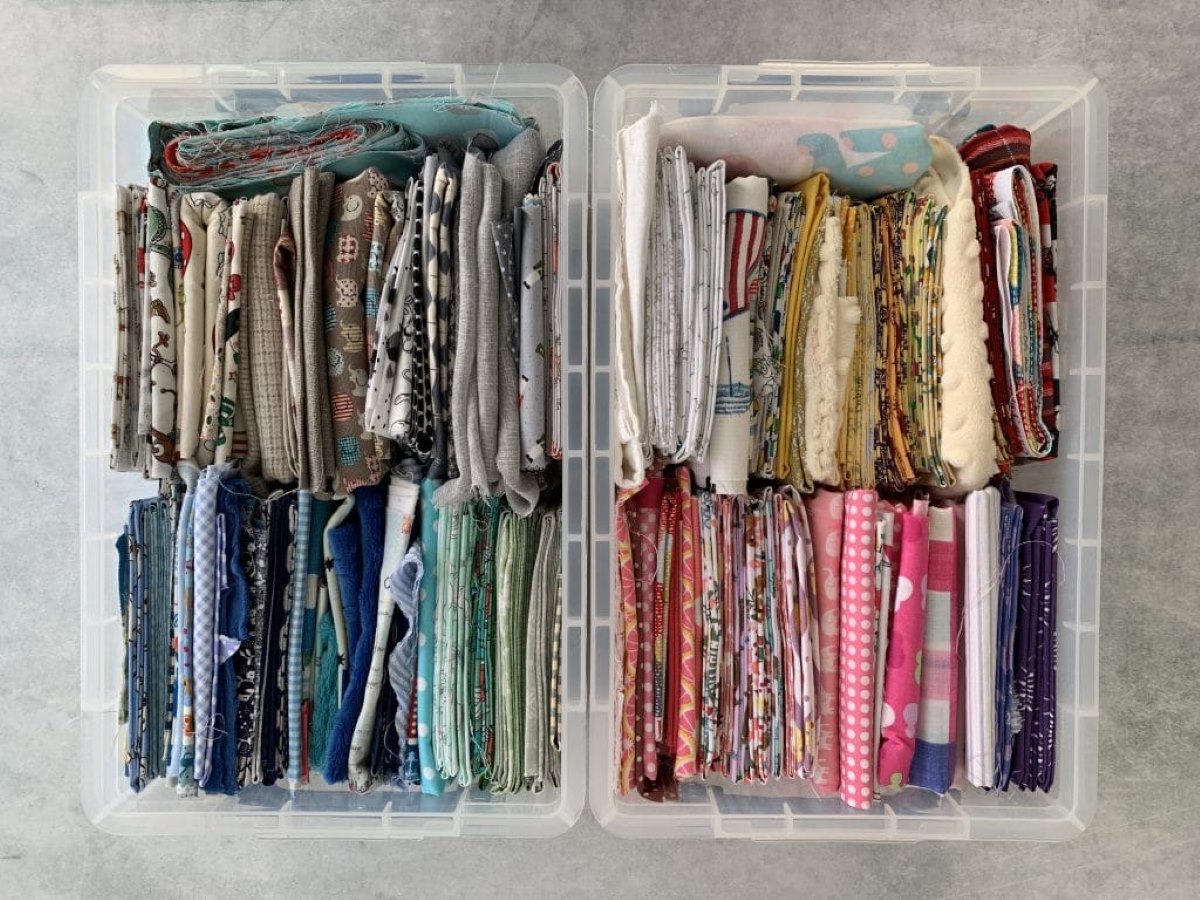

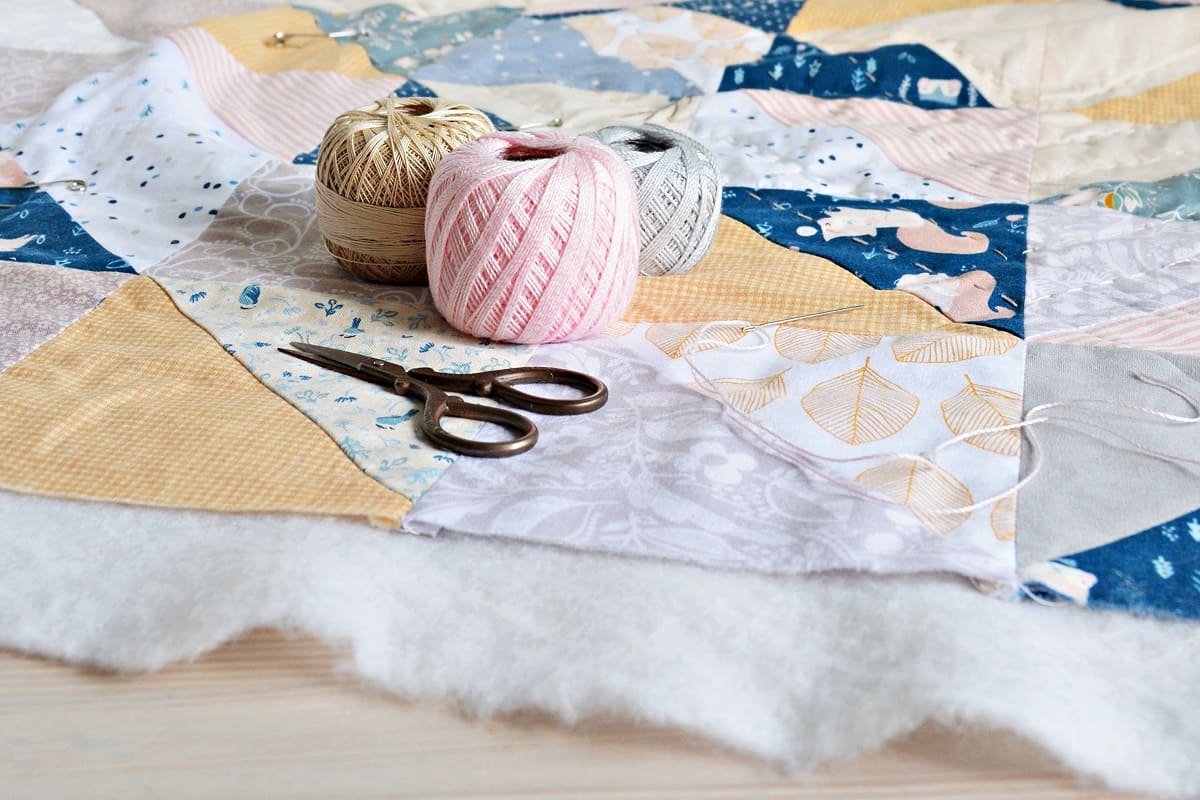

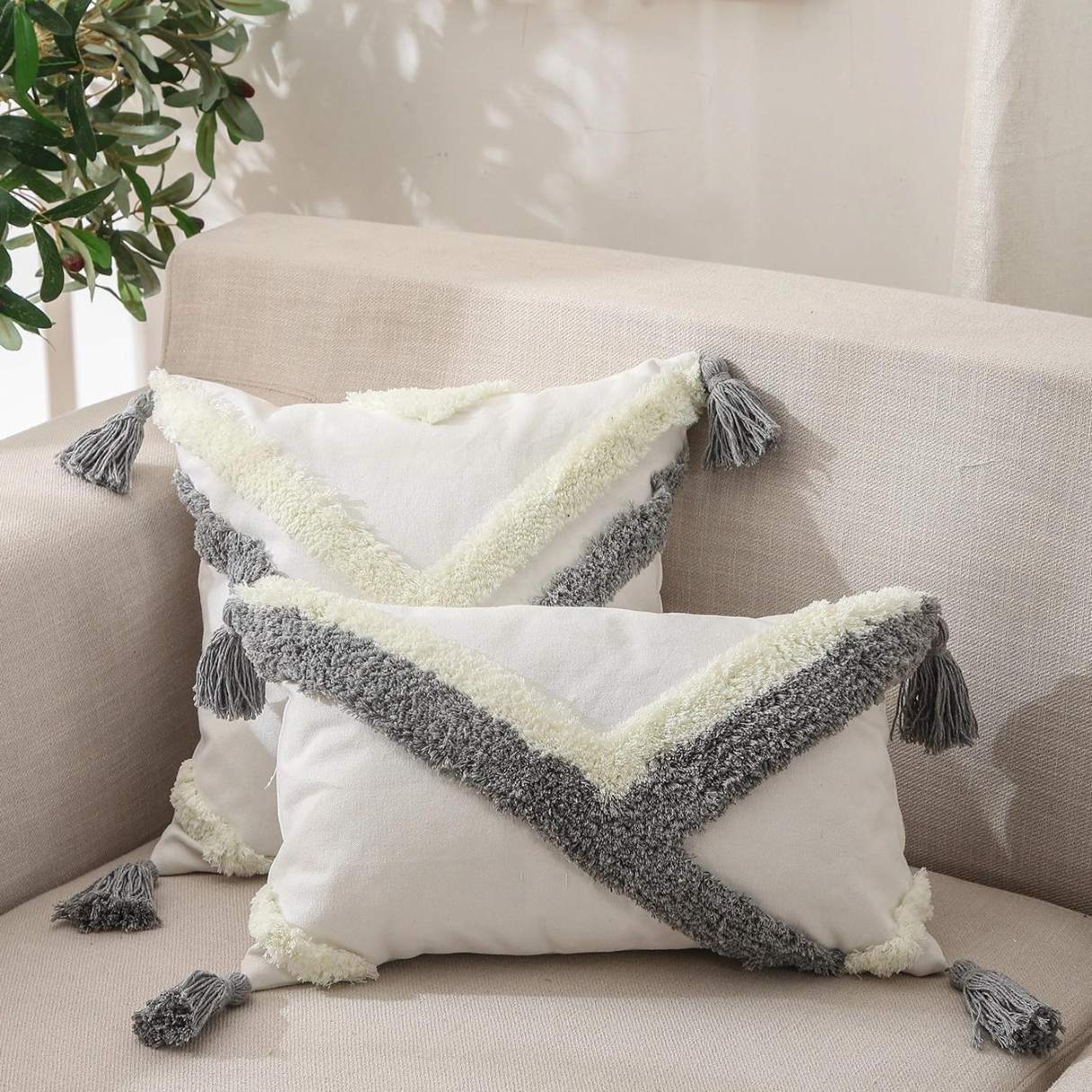
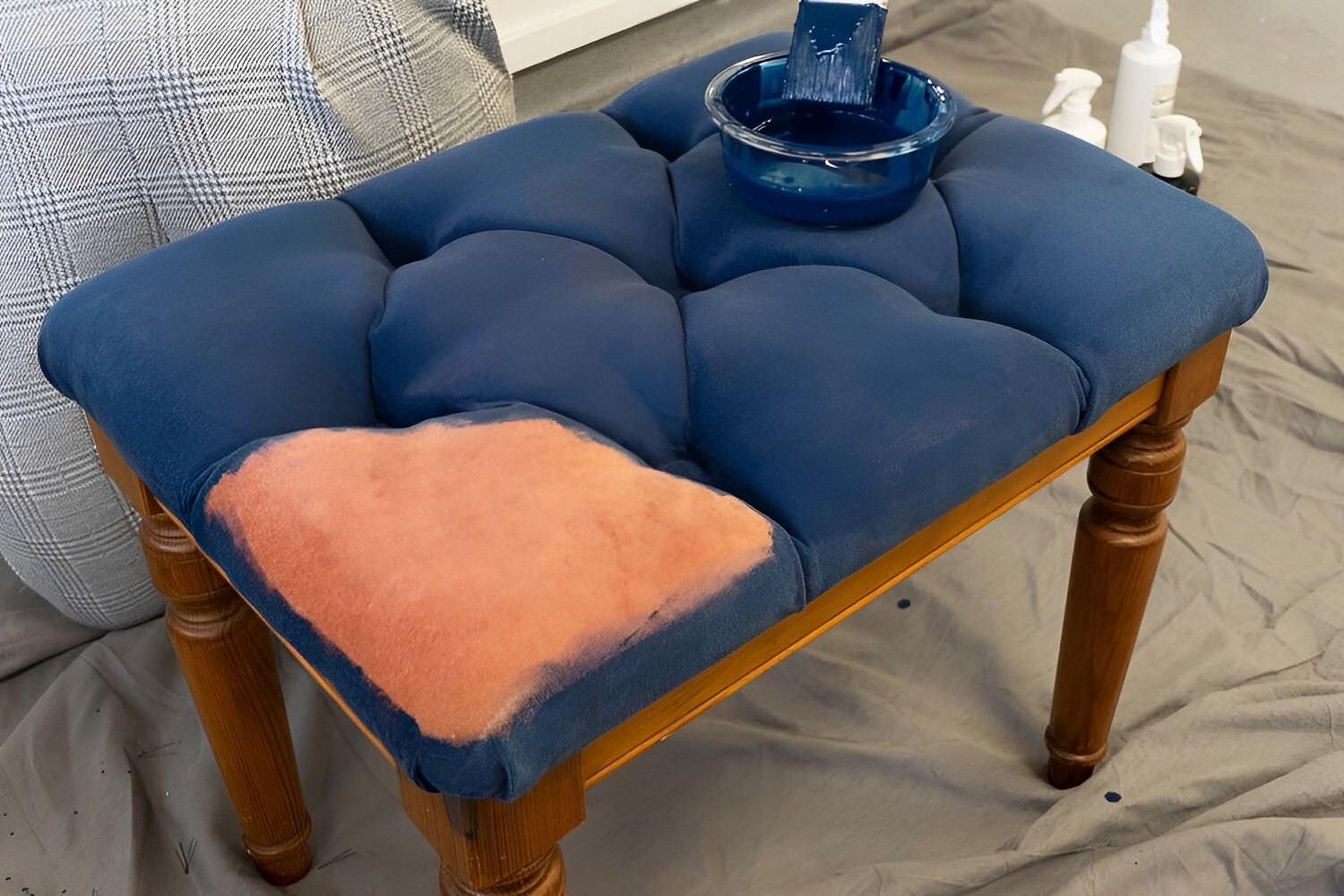

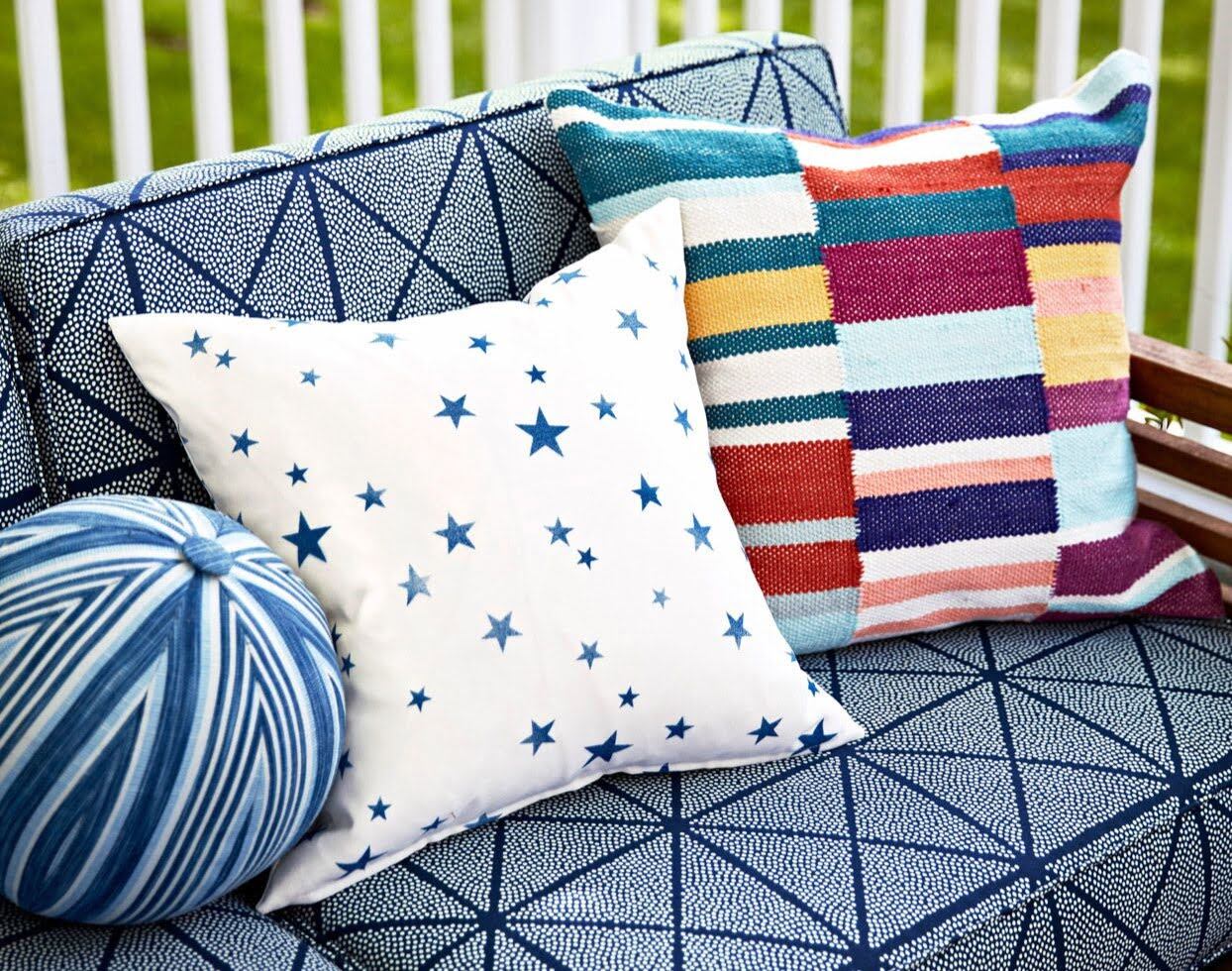
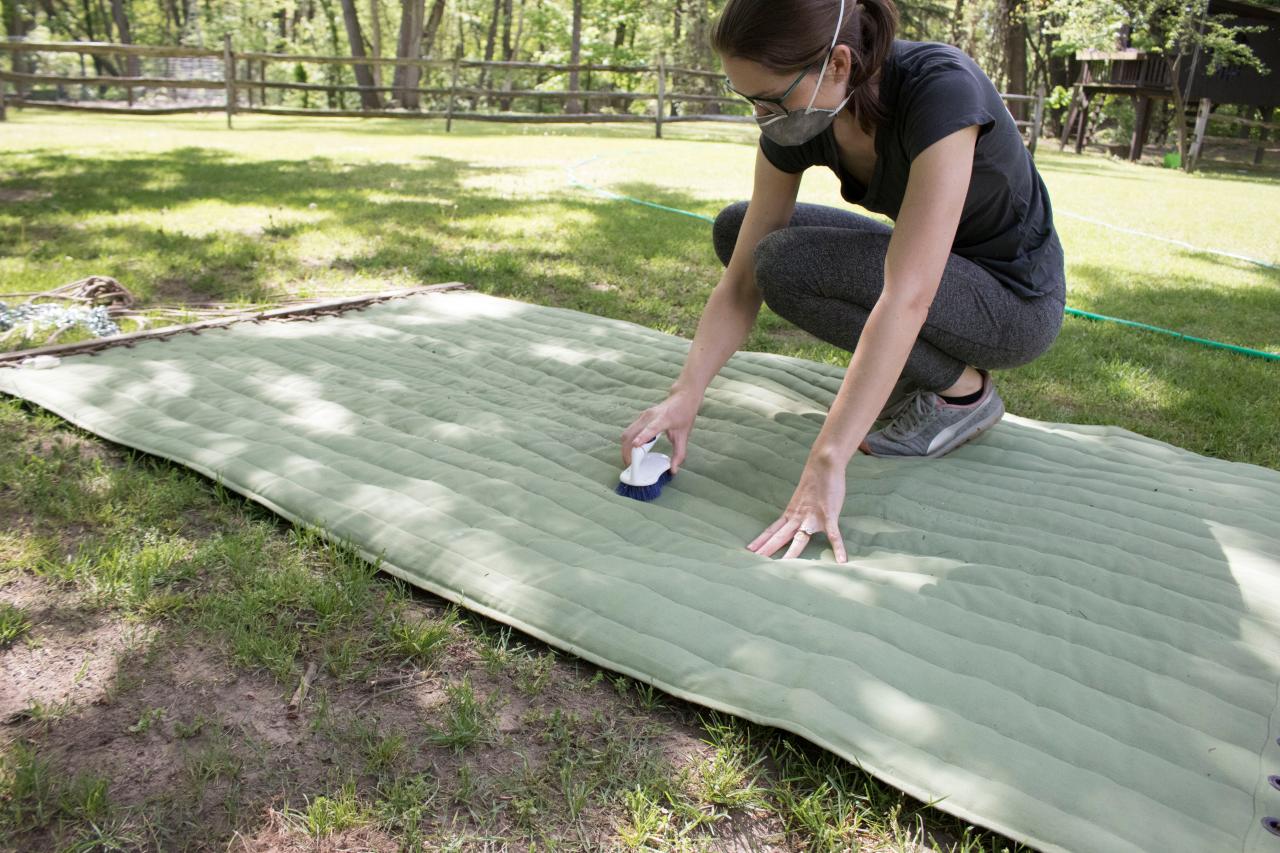



0 thoughts on “How To Store Fabric”